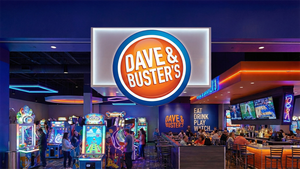Liguid-cooled ultra-fast Charging can be composed of plural charging terminals and each of them can be different configurations referring to the request from the station. there is a liquid circulation channel in the liquid-cooling charging gun which connects to the pump in the terminal which can be efficient for cooling and charging. Charging EVs superfast with liquid-cooled superchargers liquid-cooled super-chargers charge electric vehicles superfast, at the rate of one kilometer of extra autonomy per second. A full charge takes only eight minutes Liquid-Cooled Satellite supports high-end EV charging at service stations and heavy commercial charging for semi-trucks, trucks, and city buses at distribution centers and depots.Higher power makes faster charging possible, but it also generates significant heat. The heat load for DCFC and XFC load requires advanced cooling techniques to promote safe and reliable operation. Extreme fast chargers, for example, can push battery pack temperatures to 270ºC/514ºF after just a few minutes of charging. Ultimately, liquid cooling is required for EV fast charging.
Quick disconnects (QDs) or dry break quick release couplings are a critical component of these liquid cooling thermal management systems in EV applications. Quick disconnects enable proper flow, pressure, and temperature for effective EV charging operations. This white paper describes the types of EV Charging systems, why liquid cooling is necessary and provides information for consideration when specifying non-spill quick disconnect couplings for liquid cooling EV charging systems, power conversion, charging bays and EV charging stations, battery swapping systems, EV charging cables, and onboard vehicle entertainment systems.
Ultra-fast Charging Speeds: with over 1000 KW power module and 600A liquid-cooling charging terminal,it can support around 10 mins charging which will be much faster than the usual charging. Multiple Charging Terminals: Unlike the usual charging stacks, Bluesky attached the liquid-cooling terminal in the charging stacks. Therefore, users could decide which charging speed they need and how much they want to charge. This makes their charging more flexible.Long-Time Charging Supportable: Utilizing an internal liquid cooling system makes the charging low temperature which will be available for longtime charging and the cooling will be highly efficient.
EV Charger Station equipment come
Product Advantages 1. Rapid Charging Speeds With a staggering 1000KW power output, our stations achieve an impressive “one kilometer per second” charging speed. 2. Enhanced User Experience The lightweight design of the charging guns, coupled with superior heat dissipation, results in a 30% to 40% weight reduction compared to conventional charging guns. This makes it effortlessly manageable even for more delicate users. 3. Reduced Noise Levels Utilizing internal liquid cooling modules and external low-speed, high volume fans or air conditioning, our stations minimize noise levels significantly, providing a quieter charging environment. 4. High Reliability and Longevity Employing liquid cooling technology in a sealed environment ensures efficient heat exchange. This not only maintains uniform and effective cooling but also reduces internal temperatures during the charging process, thereby minimizing equipment failure rates.
Why high-power dc EV chargers require liquid cooling systems
Electric vehicle supply equipment (EVSE) typically incorporates air or liquid cooling systems to prevent overheating and maintain charging efficiency. This article explores the thermal challenges of electric vehicle (EV) chargers and the strategies EVSE manufacturers use to manage them. It also reviews the advantages and limitations of air and liquid cooling systems, explaining why manufacturers of high-power fast and ultra-fast commercial dc EV chargers are increasingly choosing the latter option.
Managing thermal challenges Many commercial EVSE operators install high-power fast and ultra-fast EV chargers (Figure 1) in public outdoor parking lots or along highway rest areas. These chargers can quickly overheat without protection from direct sunlight and efficient thermal cooling. Even indoor ultra-fast dc chargers in climate-controlled parking garages are at risk of temperature spikes without effective thermal management.
Although still used in residential ac chargers and some dc fast chargers below 150 kW, air cooling is insufficient for ultra-fast EV chargers at higher power levels. During high-power sessions (150 kW+), temperatures can exceed 392° F (200° C) within a 10-minute fast charge. As dc charging gun capacity increases from 250 to 500A, air-cooled systems face significant thermal management challenges.
Some high-power liquid cooling systems use dual-loop architecture to optimize heat dissipation. In this configuration, internal liquid-cooled modules rapidly absorb heat, while external radiators dissipate it with low-speed, high-volume fans or air-conditioning units.
Many systems use coolants like ethylene glycol or oil in modules and cables to prevent thermal buildup. These designs enable the use of smaller, lighter charging connectors and cables. In some advanced configurations, coolant flows through cables and connectors and may even extend directly to the EV’s connection point.
Although liquid cooling systems in high-power fast and ultra-fast dc EV chargers are more expensive to design and manufacture, they often result in a lower total cost of ownership (TCO) over time due to improved cooling efficiency, reduced component wear, and longer system lifespan.
Nevertheless, liquid cooling systems require precise temperature control and continuous monitoring to prevent coolant degradation and maintain optimal performance. Additionally, pumps and secondary fans used to dissipate heat from radiators draw extra power and may generate noise at higher temperatures. Notably, some liquid-cooled modules can achieve near-zero noise, with only minimal noise from external cooling systems.
Liquid cooling systems require minimal maintenance, such as coolant checks and radiator cleaning. Though sealed loops help prevent contamination, regular inspections are needed to prevent leaks that could degrade efficiency, damage infrastructure, or pose safety risks.
Media Contact
Company Name: Shanghai Mida Cable Group Limited 4
Email: Send Email
Country: China
Website: https://www.evmida.com/





